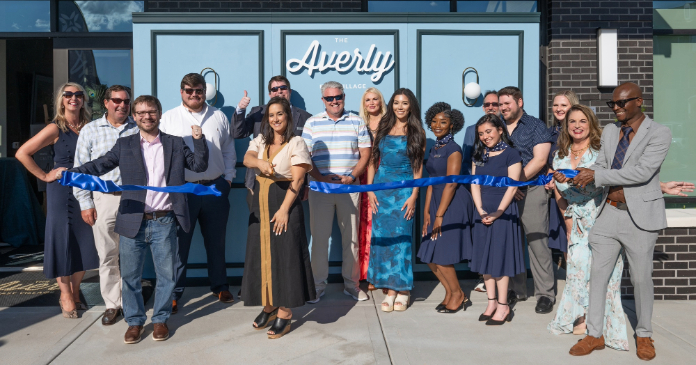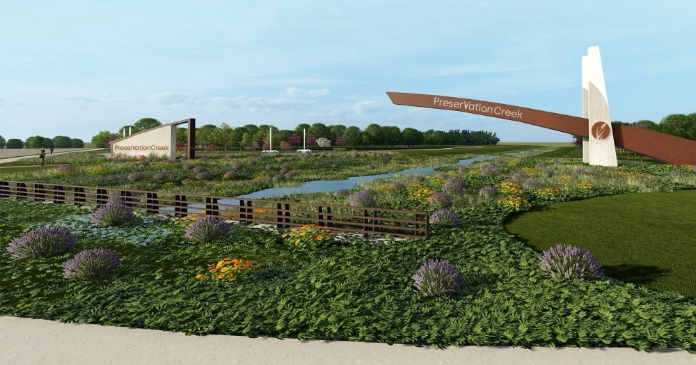As many real estate markets cool off substantially and others spiral downward in the wake of the mortgage market meltdown in an economy struggling against a full-blown recession, Houston has surged forward with increases in the prices of single-family homes, town homes and condominiums despite the fact that overall property sales have declined for six consecutive months ending with February 2008.
Houston’s strong job market, sports and cultural amenities have made the fourth largest American city a hot spot for growth, particularly on the high end.
“Houston continues to feel the ripple effects of the national mortgage crisis,” said Michael Levitin, Houston Association of Realtors chairman and principal of HTownRealty.com. “However, many area realtors are actually reporting brisk sales, which supports our contention that real estate is local, meaning some parts of town are doing well and others not so well. For Sale signs have gone up in many neighborhoods in recent weeks and sales of luxury homes remain high, so we’re hopeful that the overall numbers will soon show signs of improvement. With interest rates at historic lows, pricing that’s affordable and a good selection of inventory, this is still an excellent time for home buyers to invest.”
According to the Houston Association of Realtors, the most dramatic year-over-year sales activity was observed in Houston’s low- and high- end single-family home markets, with increases of 32.5 percent among homes priced below $80,000 and 30.3 percent among homes priced above $500,000. In January 2008, existing single-family home sales totaled 2,980, which was a 10.6 percent drop from January 2007. At $129,900, the median sales price for existing homes in the Houston area was down 2.9 percent compared to the same period last year. The average sales price of $174,737 for the month represented an increase of 3 percent from last year’s level.
“The latest numbers suggest that consumers may also be reacting to news reports about the troubled national real estate landscape, despite the fact that Houston has enjoyed a comparatively robust housing market, thanks largely to local job growth. Home buyers in Houston stand to benefit from low interest rates, affordable pricing and a good selection of inventory,” said Levitin.
While Houston appeared to miss the boat on the pre-meltdown housing boom that sparked unrealistic run ups in prices on the East and West coasts, the factors that reined in its growth are what are keeping it going now when other markets have lost their steam. The factors pertain mainly to abundant land and city zoning that are some of the least restrictive land-use and building rules in the nation coupled with a highly permissive attitude toward tearing down old buildings.
Urban renaissance
The trend toward revitalization of inner-city areas to meet the surging demand for residential properties in urban centers is popping up all over the country and nowhere is that more evident than in Houston where luxury condos and apartments reshaped the downtown area and is now transforming the city’s uptown district. First came the foray into the downtown area, where prominent developer the Randall Davis Company helped pioneer loft and “faux” loft development, including redevelopment of numerous historic buildings such as the nationally known Rice Hotel. Now, though, Davis has his eye on the lucrative uptown district where he has been developing luxury high- rise condominium towers for the past five years.
“I was one of the first developers to take a risk on residential in downtown Houston when the area was far from being desirable,” said Randall Davis, head of the firm that bears his name. “One of the projects I am most proud of was helping to save the landmark Rice Hotel—sure to be a target of the wrecking ball and vacant for many years—by converting it to luxury apartments. The project became a centerpiece and hallmark of downtown redevelopment. My Uptown project, Cosmopolitan, was one of the fastest selling condos in Texas.”
Davis, who has developed more high-rise condominium properties than any developer in Texas—mostly in Houston, but also on South Padre and Galveston islands, with another planned for Dallas—has a passion for architecture, particularly the elegant spared buildings, such as Manhattan’s Chrysler building, that soars above the cityscapes. Davis wants to share his appreciation of the architectural beauty of high- rise towers and their ability to transform the city.
In the past five years, he has transformed the multifamily landscape of Post Oak Boulevard, the distinctive street that comprises the heart of Houston’s uptown district. Once primarily commercial, Post Oak has changed with the addition by the Randall Davis Company of four new landmark condominium towers to the neighborhood’s skyline—Empire, Manhattan, Cosmopolitan and Titan. Uptown is a mecca for shoppers, highlighted by the Galleria, one of the largest malls in the country.
Located just five miles from downtown Houston via scenic Memorial Drive, uptown is a bustling urban center comparable in size to the downtown areas of Denver and Seattle and boasts one of the highest per capita incomes in the country. Uptown offers a unique landscape of architecturally significant buildings and post-modern street accents, including one-of-a-kind signage that appear to float above intersections and reflective arches that span Post Oak Boulevard. All of this is enhanced by lushly planted esplanades, green spaces and tree-lined sidewalks. More than 22 million visitors come from around the world each year to the uptown area with its eclectic and comprehensive mix of more than 2,000 businesses, approximately 600 specialty boutiques and retail stores, nearly 30 upscale hotels plus 100 restaurant and nightlife venues.
In describing his firm’s strategy for building uptown, Davis says, “Uptown tends to draw not just local, but a substantial number of international buyers, which ultimately provided me with a larger market. I was also able to secure truly prime pieces of land—among the last currently available directly on Post Oak, which would give residents an opportunity to be steps from sought-after existing and new retail, dining and entertainment.”
The Titan, a sleek, 26-story tower on a prime 25,000-sq.-ft. site, recently began taking reservations. The 22-story Cosmopolitan, located across the street, has been one of the fastest selling high- rise condominium projects in Texas and will welcome its first residents this summer. A visually striking building that will dwarf its surrounding area, the Titan will feature 80 fully customizable luxury residences ranging in price from $400,000 to more than $3 million. Units average 2,000 sq. ft. and incorporate 10-foot ceilings, expansive balconies, steam showers, air jet tubs, Wolf and Sub-Zero appliances plus granite, marble and exotic hardwood surfaces. There will be six multilevel penthouse units with private sky pools. One-third of the building’s homes will have private elevator entrances. Additional amenities include 24-hour concierge, six floors of controlled access garage parking, wine room, state of the art fitness center, screening room and seventh floor rooftop infinity pool.
All of the development focused on inner city Houston has produced some drawbacks, as well. Houston’s permissive zoning practices have given sway to growing urban sprawl with area motorists logging more miles per capita than in any other city in the U.S. for an average of 37.6 miles per day, a 53 percent jump from the 1990s, according to the Surface Transportation Policy Project in Washington.
Other players transforming Houston’s urban core include Four Seasons Hotels and Resorts, which 25 years ago incorporated long-term stays and luxury residences within its Four Seasons facilities. Today, the Four Seasons, downtown’s only AAA Five Diamond hotel, has added new residences and features a collection of 64 fully furnished units that average 900 sq. ft. and boasts inviting entries, expansive living/ dining areas, plus full kitchens.
Seeking to counter the growing sprawl plaguing Houston, the development team of Urban Partners and Gables Residential introduced Houston’s West Ave project as an alternative approach centered on the new urbanism and more pedestrian-friendly focus. The team brings a history of high quality urban development to the project, which is a major departure from current Houston in town retail and residential offerings. Retail specialist Urban Partners merged with Gables Residential, a major apartment developer, in 2006 and have focused on creating distinctive urban neighborhoods that blend leading edge retail and residential development.
As a first-of-its-kind, mixed-use development for the city, West Ave will be first to market among a handful of mixed-use developments in the planning stages or under construction in central Houston.
Delivery of a portion of its 390 luxury apartment residences is projected as early as August 2008, while two floors and 180,000 sq. ft. of prime retail are slated to debut in August 2009.
According to Robert Bagwell, president of Urban Partners, “West Ave provides a once-in-a-lifetime opportunity to create a new urban community while giving nearby residents and visitors a long awaited central commercial core bridging the traditional strip center concepts to the west and the more indigenous street retail scenes of lower Westheimer and the Montrose neighborhood to the east.”
Houston’s example of a strong luxury market and high demand for high quality urban residential properties drives home the principle that, more than anything, real estate is a local phenomenon first. The region’s abundant land, strong local economy (oil is enjoying a boom in the post-Enron era), more favorable housing prices compared to other regions and more flexible zoning regulations all contribute to distinct local conditions unique to Houston and which enable the region to run counter to the prevailing real estate markets across the country.















